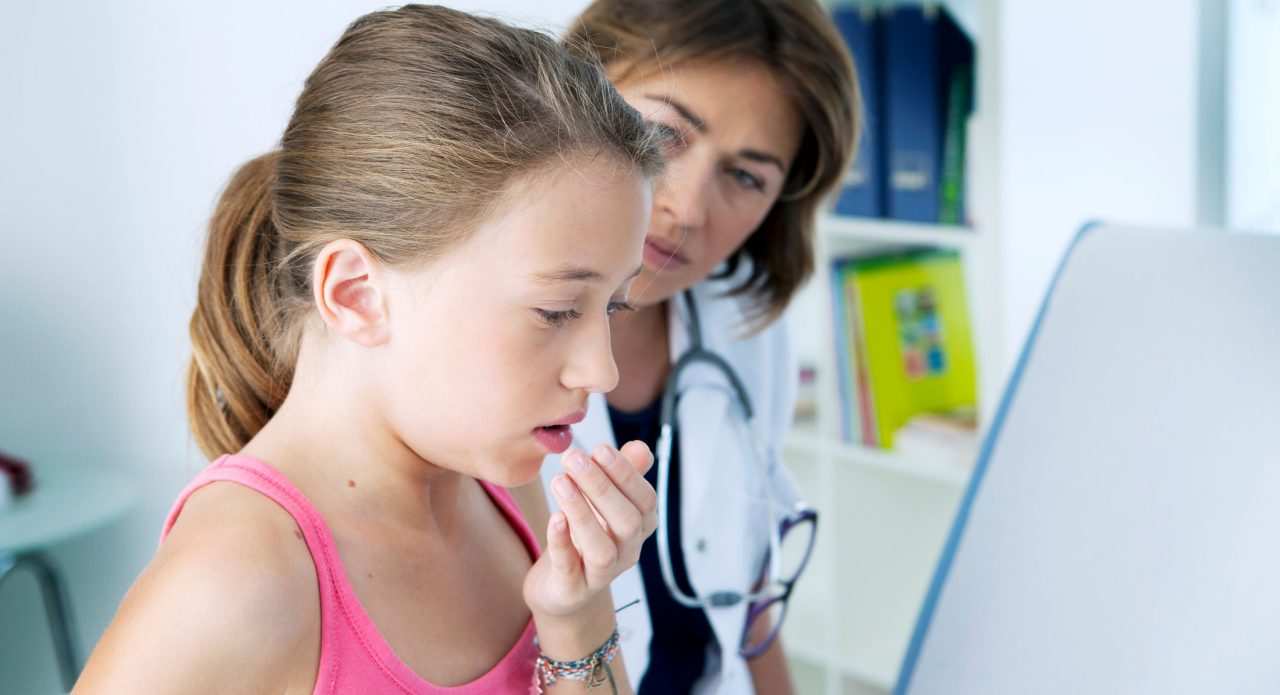Symptoms and Treatment of Whooping Cough

Learn the symptoms of whooping cough, along with prevention and treatments for whooping cough, to keep your family safe from this disease.
What is whooping cough?
Whooping cough, which is also known as pertussis, is a bacterial infection that affects the respiratory system. It is highly contagious, and the infection can last 10 weeks or longer. Because of this it is sometimes known as the “100-day cough.” Anyone, at any age, can develop pertussis, though the infection is generally more mild in teens, adults, and anyone who has been vaccinated.
Worldwide, there are nearly 16 million cases of pertussis every year, and according to the Centers for Disease Control and Prevention (CDC), about 195,000 of these are fatal. Whooping cough can be dangerous for everyone, but it is particularly dangerous for children and infants.
YOU MIGHT ALSO LIKE: Pediatric Infectious Diseases
The CDC and the American Academy of Pediatrics recommend that all children receive a pertussis vaccine. Before the pertussis vaccine became available in the 1940s, about 200,000 children in the United States contracted whooping cough every year, and 9,000 children died as a result. With current vaccination rates, between 10,000 and 40,000 children in the U.S. develop pertussis every year, and only about 20 of those cases are fatal.
Research indicates that children who have not been vaccinated are 23 times more likely to contract whooping cough than those who are vaccinated, and studies have found that unvaccinated or under-vaccinated populations can directly contribute to whooping cough outbreaks.
Infants and whooping cough
Whooping cough is especially dangerous to very young babies, who have weak immune systems and are not old enough to receive the vaccine. Babies who contract whooping cough often have severe difficulty breathing, and about half of them need to be hospitalized. The majority of childhood deaths due to whooping cough happen to infants under three months.
After the rise of whooping cough outbreaks between 2009 and 2017, including one where California declared a whooping cough epidemic, the CDC and the National Institutes of Health began recommending that pregnant women receive the Tdap vaccine in their third trimester in order to protect newborn infants. The Tdap boosts a mother’s immunity against tetanus, diphtheria, and acellular pertussis, allowing her to pass along these antibodies to her unborn child. This creates immunity until the baby can receive a whooping cough vaccine directly.
The CDC also recommends that grandparents and anyone who works as a caretaker for very young children receive the Tdap vaccine.
Symptoms of whooping cough
Pertussis often begins with mild symptoms, such as a runny nose, along with a moderate cough and fever. These early signs are often mistaken for a common cold.
As the disease progresses, however, symptoms of whooping cough will become worse, developing into long fits of coughing. These may be followed by vomiting or extreme exhaustion. In between fits, the sick person may appear relatively healthy.
Babies with whooping cough, however, may not develop these coughing fits. Instead, the infection can cause them to stop breathing. These pauses in breathing are called apnea, and they can be life-threatening without proper medical attention.
Recovery from whooping cough happens slowly and may be accompanied by a secondary lung infection. This is particularly common in children and those who have not been vaccinated. Approximately 23 percent of babies who develop whooping cough will also develop pneumonia.
What does whooping cough sound like?
Coughing fits due to pertussis are often severe enough to force all the air out of the lungs, causing the need to inhale rapidly after the fit is done. This causes a distinctive “whoop” sound, which gives whooping cough its name. This sound is one of the main signs that a cough is due to pertussis, rather than another infection, allergy, or irritant.
Treatments for whooping cough
Because it is caused by bacteria, pertussis can be treated with an antibiotic that your doctor prescribes. Along with fighting the infection, antibiotics help prevent the spread of the bacteria to other people.
The CDC recommends several steps to help manage whooping cough during treatment. These include following the prescribed antibiotic routine, staying well hydrated, washing hands frequently, and eating small meals to reduce the likelihood of vomiting. Using a clean, cool mist vaporizer can help loosen mucus and soothe coughing. It is also helpful to avoid irritants that can trigger coughing fits, such as dust, pet dander, and smoke.
Antibiotic treatments for whooping cough should begin as quickly as possible because the bacteria are generally gone from the body within three weeks, though symptoms can linger much longer. Early treatment shortens the length of symptoms.
Serious cases of pertussis may need to be treated in the hospital, and babies are especially likely to require hospitalization as they are at risk for complications and secondary infections. Most cases of pertussis, however, can be treated at home.
Updated:
March 26, 2020
Reviewed By:
Janet O’Dell, RN